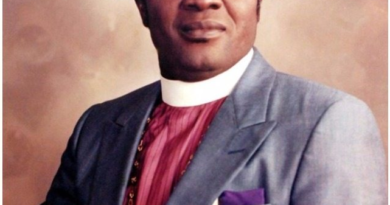Challenges Faced by CAC Heroes of Faith — A Balanced Look
The Christ Apostolic Church (CAC) holds a significant place in Nigeria’s spiritual landscape. Its revivalists reshaped towns and stirred national faith in ways that still resonate today. But where there is great influence, there are also questions, tensions, and criticisms. This article takes a sober, balanced look at some verified challenges and controversies surrounding CAC’s “heroes of faith.” Our goal is to explain what happened, why it mattered, and what lessons the church and public can draw.
Revival and the Law: When Prophecy Meets Court
The early apostolic revivals of the 1920s and 1930s disrupted social norms in many Nigerian communities. Mass conversions, burning of charms, and public denouncements of traditional practices sparked backlash. A well-documented episode involved Apostle Joseph Ayo Babalola, whose outspoken campaign against witchcraft and certain customs led to official charges and a brief detention in the early 1930s.
This episode mattered beyond the immediate arrest. It ignited public debate about religious freedom, popular piety, and colonial law. Clergy who challenged established customs often found themselves at odds with colonial authorities and local leaders. This tension forced the movement to clarify its public role and encouraged CAC leaders to balance prophetic boldness with prudence to avoid legal or violent reprisals.
Schism and Institutional Growing Pains
As the revival swept across regions, the CAC faced internal growing pains. Doctrinal differences, personality clashes, and differing visions of church governance led to schisms and factionalism in its early decades. Scholars studying Nigerian Pentecostal and Apostolic movements note that institutions born from revival often struggle to convert charismatic momentum into stable structures.
In practice, some pastors and evangelists left to start independent ministries, while others clashed over liturgy, leadership, and ministerial training. These splits sometimes confused congregants and slowed the institutional growth that would later enable CAC to build schools, seminaries, and missions. The broader lesson is clear: revival movements need strong governance to sustain growth without losing spiritual direction.
Vision, Ownership, and the Limits of Legacy: The WOSEM Case
A notable example of leadership complexity is the relationship between CAC and Timothy Oluwole Obadare’s World Soul-Winning Evangelistic Ministry (WOSEM). Obadare’s ministry remained independent despite attempts to bring it back under CAC’s umbrella. His camp insisted that WOSEM’s evangelistic vision was unique and could not simply be handed over or absorbed.
This situation drew public scrutiny. When well-known revivalists establish ministries outside denominational structures, questions arise about accountability, succession, and stewardship of resources. Supporters see such ministries as faithful extensions of revival, while critics worry about the risks of personalizing authority and potential fragility when a founder retires or passes on.
The Prosperity Debate and Theological Critique
As Pentecostal worship and faith-healing spread, debates around theology intensified—especially regarding material blessing and prosperity teaching. Academic studies describe how an emphasis on guaranteed financial blessing has complicated the reputations of revival movements in Nigeria.
While strong belief in miraculous provision energizes many believers, it also invites criticism when expectations aren’t met or when spiritual language overlaps with commercial interests. Critics inside and outside CAC have raised concerns about the need for theological nuance and pastoral responsibility. Church leaders emphasizing holiness and sacrifice often find themselves addressing questions about money, healing claims, and care for vulnerable members.
Property, Campgrounds, and Local Disputes
Physical legacies like large campgrounds and revival sites sometimes become sources of local conflict. CAC’s Babalola Memorial Camp and other sacred sites have, over time, generated both economic opportunities and tensions with neighboring communities or competing land claimants.
These disputes matter because campgrounds aren’t just real estate; they are pilgrimage sites, economic hubs during conventions, and repositories of church memory. Navigating land rights involves legal, civic, and communal challenges that test the church’s ability to balance growth with good neighborliness.
Leadership Style, Personality, and Public Scrutiny
High-profile spiritual leaders naturally attract public interest. Their sermons, decisions, and personalities undergo scrutiny. Historical records reveal instances where strong personalities in revival movements inspired deep loyalty but also sparked vocal critique.
Read Also: 5 CAC Pioneers Who Fanned Revival Flames in Nigeria
Sometimes the concern centered on authoritarian leadership styles; at other times, transparency in financial and organizational matters was questioned. Research highlights that the boldness and charisma fueling revival can also create tensions in a modern institutional church. The lesson for CAC has been the need for clear governance policies and accountability systems to protect both spiritual vitality and congregants.
Public Perception, Media, and Modern Expectations
The media’s role in revival movements has evolved. From fragmented colonial-era reports to today’s instant social media commentary, public reactions can be swift and polarized. When a hero of faith preaches a contentious message or a revival claim goes viral, CAC leadership faces pressure to manage narratives carefully.
Scholars note that navigating media dynamics is now a permanent reality for revival churches. They must balance transparency and message integrity, handle misinformation, and engage critics while maintaining core spiritual commitments.
Positive Outcomes from Controversy
Handled well, controversy can produce growth. Several public disputes have prompted CAC to formalize ordination procedures, improve financial management, and better administer campgrounds. Theological debates have encouraged pastors to deepen scriptural teaching and enhance pastoral care for vulnerable congregants.
In essence, these challenges have driven reflection and institutional strengthening, helping preserve the movement’s strengths while addressing weaknesses.
A Balanced Takeaway
CAC’s heroes of faith are not immune to human flaws, nor are revival movements exempt from growing pains. The documented controversies show the complex costs of mass spiritual awakenings: legal clashes, schisms, ownership disputes, theological tensions, and public scrutiny.
But these issues do not erase their achievements. Instead, they highlight a practical truth: charisma needs structure; miracle claims require pastoral follow-through; sacred sites demand sound stewardship; and institutions must be resilient enough to correct course while preserving the spiritual impulse that birthed them.
For church historians, leaders, and believers today, this balanced perspective offers valuable lessons for sustaining revival and faithfully stewarding its legacy.
Content Credit | Dada Blessing
Image Credit | ministryark.com




